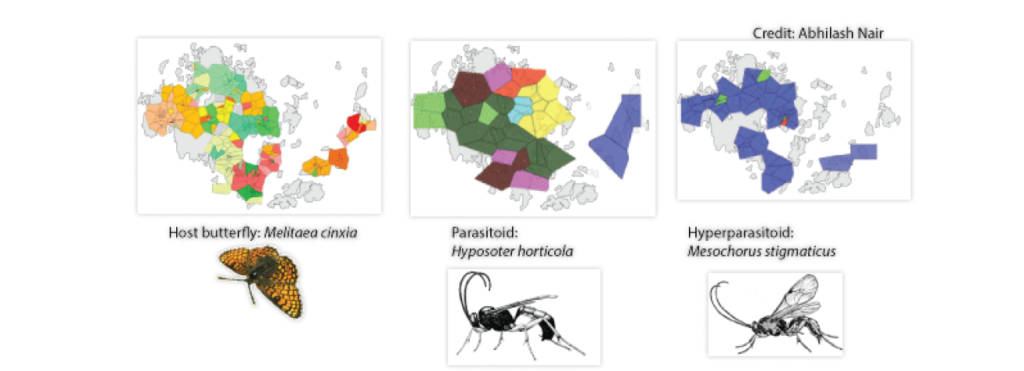Research Topics
Population ecologyPopulation ecology
We study the spatial population dynamics of closely interacting species in a fragmented landscape by examining their life history, behavior and natural history, and using population genetics tools. For instance, we have found that over the long term that (meta)population dynamics of the parasitoids of the butterfly Melitaea cinixa are influenced by host dynamics, dispersal ability, host plant species, hyperparasitism, competition, and temperature mediated phenology. In contrast, the dynamics of the butterfly host is driven strongly by weather. For more details scroll down to the sections below.
The effects of species interaction and spatial structure of the landscape on population dynamics and genetic structure.
The population dynamics of species depend on the distribution and stability of resources and enemies, population size and the extent to which individuals move between resource patches. It isn’t simple to disentangle what biotic and abiotic factors go into explaining the dynamics of species. A recent study showed that increasing synchrony of population dynamics of the butterfly M. cinxia can be explained by weather extremes, and not interaction with natural enemies

Kahilainen, A., van Nouhuys, S., Schulz, T. & Saastamoinen, M. 2018
Metapopulation dynamics in a changing climate: Increasing spatial synchrony in weather conditions drives metapopulation synchrony of a butterfly inhabiting a fragmented landscapeGlobal Change Biology, 24: 10.1111/gcb.14280

Duplouy, A., Nair, A., Nyman, T., van Nouhuys, S. 2021
Long-term spatiotemporal genetic structure of an accidental parasitoid introduction, and local changes in prevalence of its associated Wolbachia symbiont. Molecular Ecology, 30, 4368-4380Opedal, Ø., Ovaskainen, O., Saastamoinen, M., Laine, A-L., van Nouhuys, S. 2020
Host plant availability drives the spatio-temporal dynamics of interacting metapopulations across a fragmented landscape.Ecology, 101(12):e03186. 10.1002/ecy.3186
